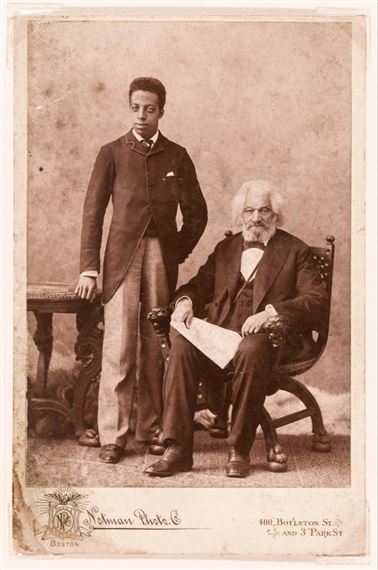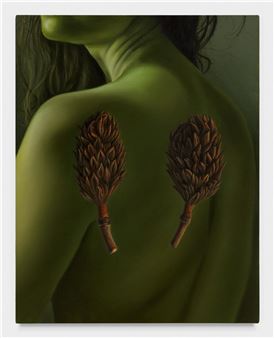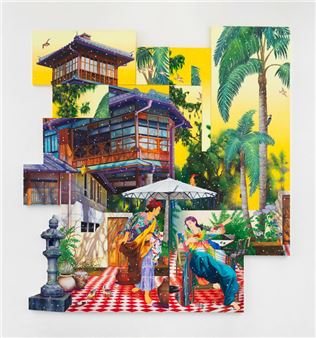Frederick Douglass: Embers of Freedom
The SCAD Museum of Art presents an exhibition centered on the Frederick Douglass Family Archive from the collection of Walter and Linda Evans. This historic register of the Douglass family’s manuscripts, letters, newspaper clippings, and photographs are displayed in dialogue with artworks by contemporary artists whose work reflects the aesthetic and political values espoused by this revolutionary leader.
For Douglass (1818-1895), an individual who was born into slavery and went on to become one of the world's most-renowned social justice campaigners, the right to the imagination was the right to life. In his work as an orator, author, and fierce intellectual, the abolitionist believed that not only words, but works of art, were tools in the path for freedom. As a prolific creator and collector of autobiographies, essays, diaries, poems, photographs, paintings, drawings, and sculptures – many of which now reside in the Walter and Linda Evans Collection and are included in this exhibition – Douglass ultimately believed in art as a means to individual and collective liberation.
Frederick Douglass: Embers of Freedom is a dynamic exhibition that addresses critical subjects that shaped the life’s work of Douglass and continue to be at the forefront of today’s sociopolitical discourse. This project makes visible the historic narrative of the Douglasses and their unwavering commitment to transatlantic abolitionism and radical reform, not only for African Americans but for society as a whole. Additionally, this exhibition offers an expanded definition of Douglass, as it considers him not only as a key figure for civil rights but also an advocate for women’s suffrage, one of the first proponents of photographic theory and, perhaps most distinctively, as a family man.

Recommended for you
The SCAD Museum of Art presents an exhibition centered on the Frederick Douglass Family Archive from the collection of Walter and Linda Evans. This historic register of the Douglass family’s manuscripts, letters, newspaper clippings, and photographs are displayed in dialogue with artworks by contemporary artists whose work reflects the aesthetic and political values espoused by this revolutionary leader.
For Douglass (1818-1895), an individual who was born into slavery and went on to become one of the world's most-renowned social justice campaigners, the right to the imagination was the right to life. In his work as an orator, author, and fierce intellectual, the abolitionist believed that not only words, but works of art, were tools in the path for freedom. As a prolific creator and collector of autobiographies, essays, diaries, poems, photographs, paintings, drawings, and sculptures – many of which now reside in the Walter and Linda Evans Collection and are included in this exhibition – Douglass ultimately believed in art as a means to individual and collective liberation.
Frederick Douglass: Embers of Freedom is a dynamic exhibition that addresses critical subjects that shaped the life’s work of Douglass and continue to be at the forefront of today’s sociopolitical discourse. This project makes visible the historic narrative of the Douglasses and their unwavering commitment to transatlantic abolitionism and radical reform, not only for African Americans but for society as a whole. Additionally, this exhibition offers an expanded definition of Douglass, as it considers him not only as a key figure for civil rights but also an advocate for women’s suffrage, one of the first proponents of photographic theory and, perhaps most distinctively, as a family man.
Artists on show
- Barbara Walker
- Betye Saar
- Charles Edward Williams
- Gillian Wearing
- Glyneisha Johnson
- Jacob Lawrence
- James van der Zee
- Kevin Beasley
- LaToya Ruby Frazier
- Le’Andra LeSeur
- Lubaina Himid
- Lyle Ashton Harris
- Martha Rosler
- Meleko Mokgosi
- Omar Victor Diop
- Onyedika Chuke
- Raphaël Barontini
- Scott Covert
- T.R. Ericsson
- Titus Kaphar
- Wilmer Wilson IV
Contact details

Related articles
Sometimes—at the best of times—a work of art leaves me lacking sufficient language to describe either the work itself or my experience of it.

 ARTISTS
ARTISTS














